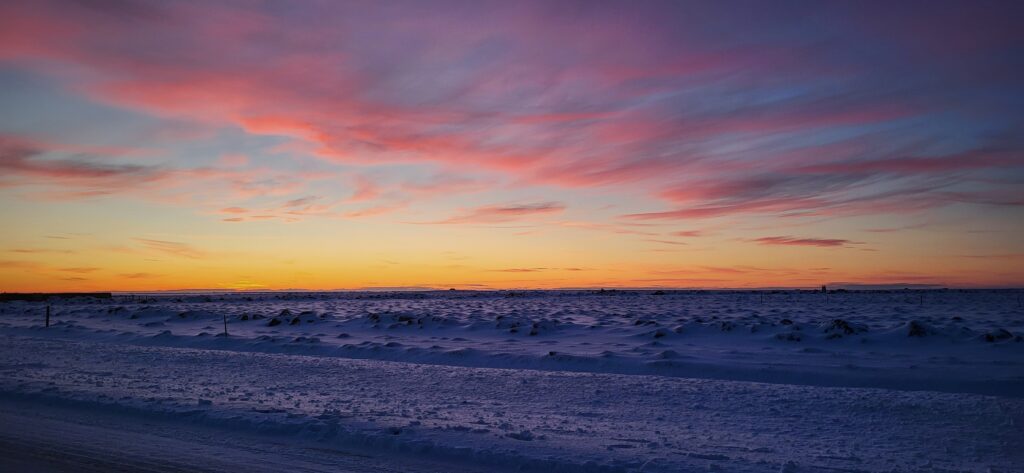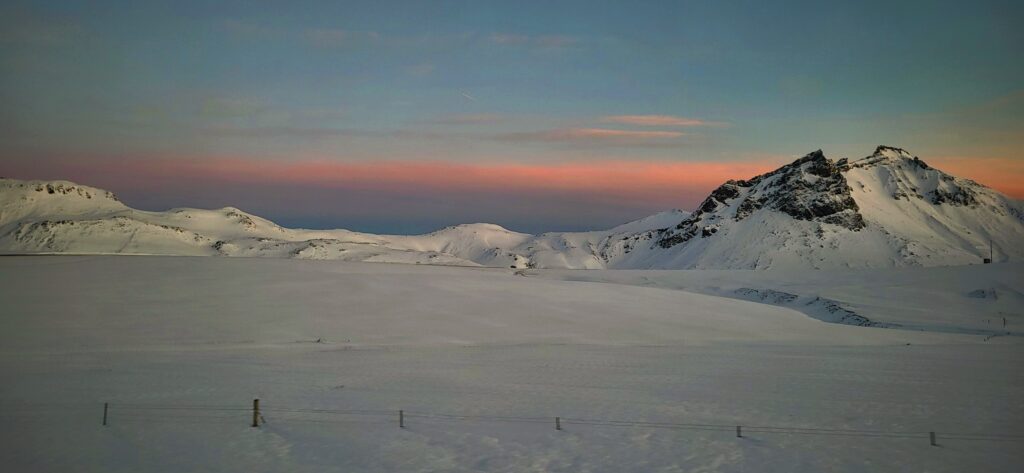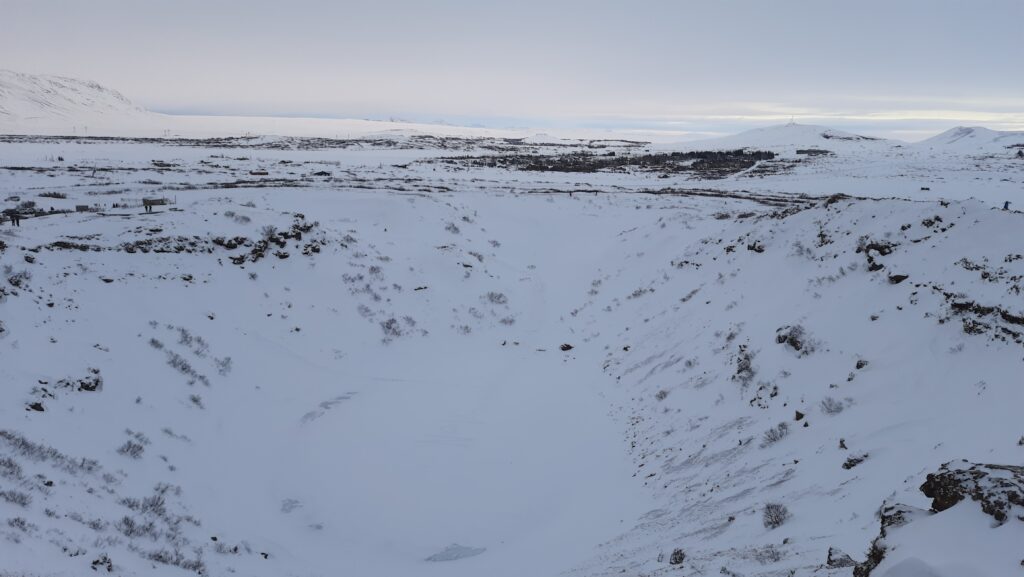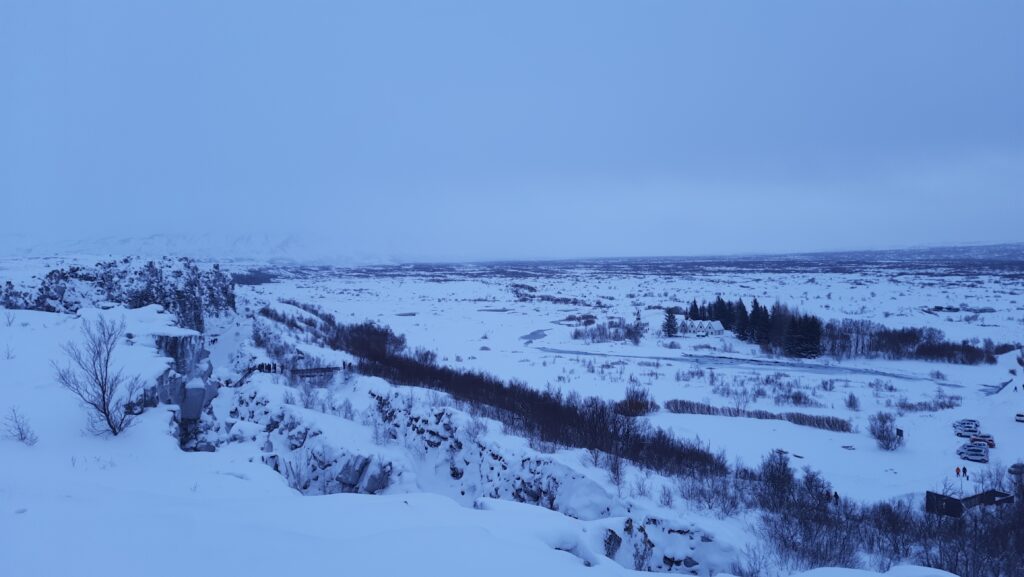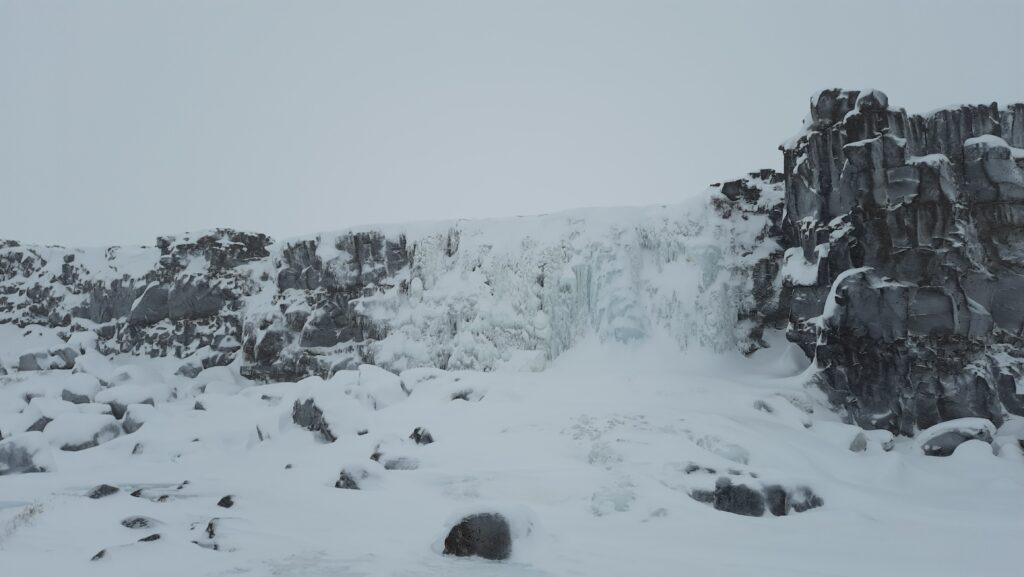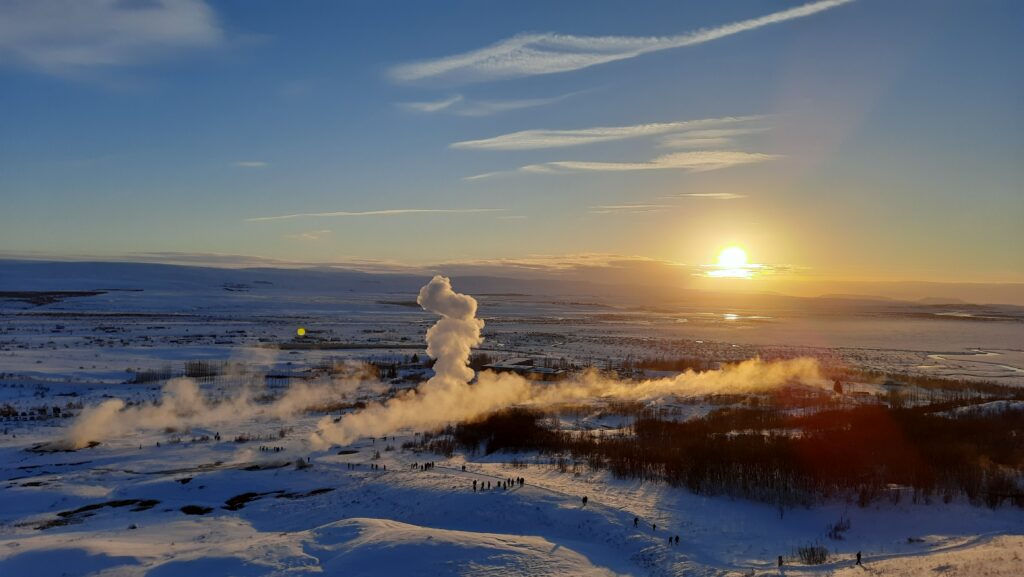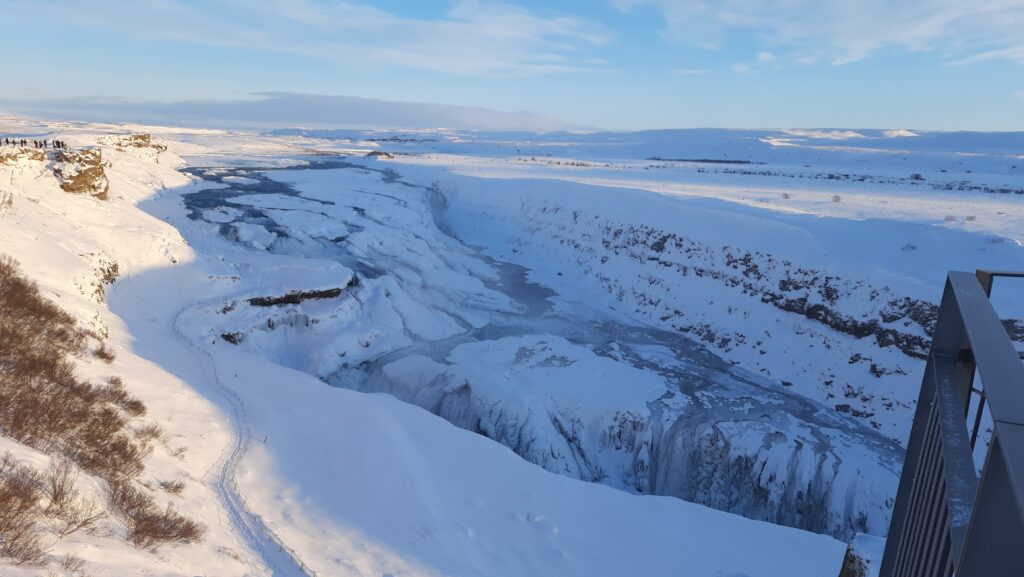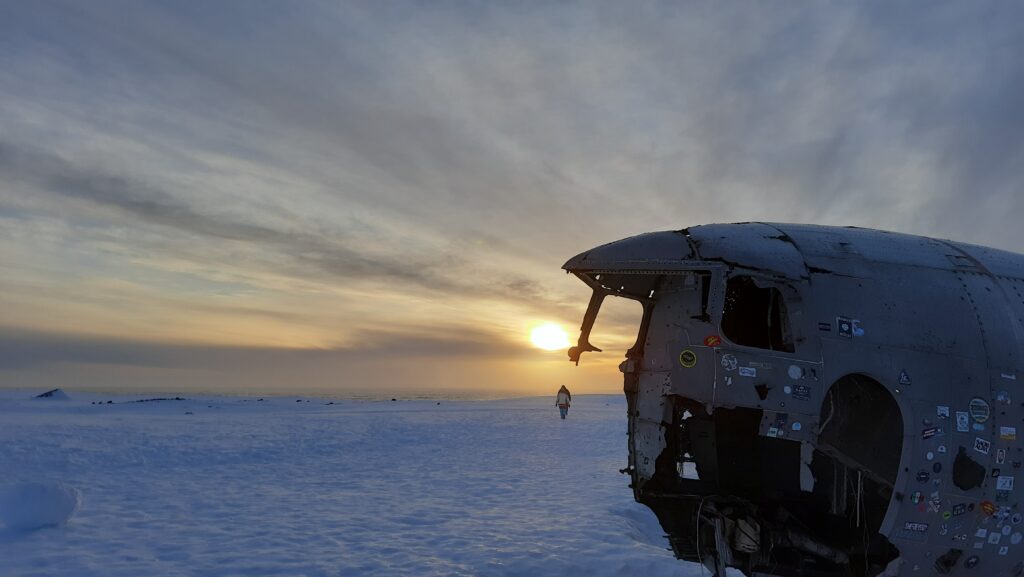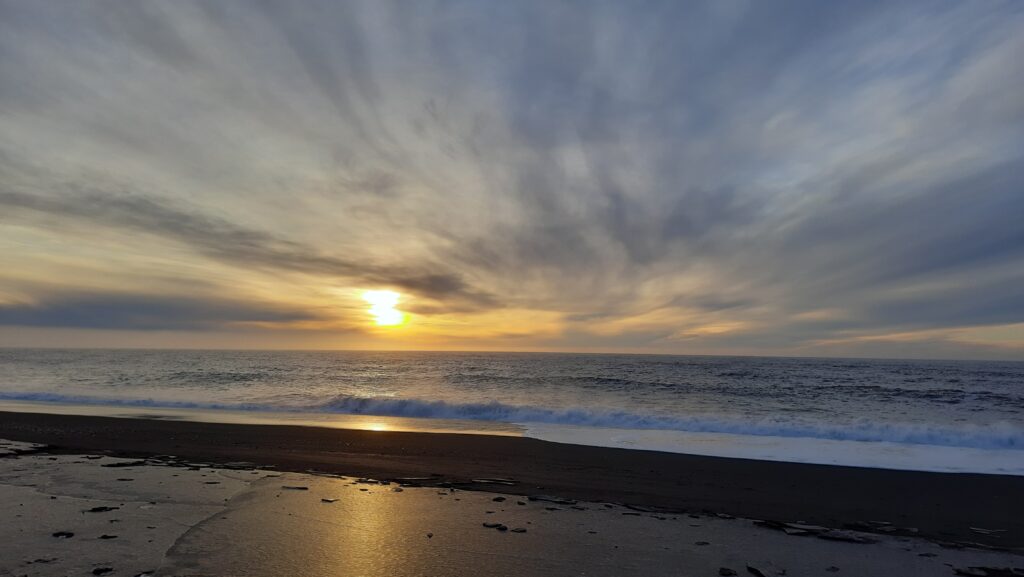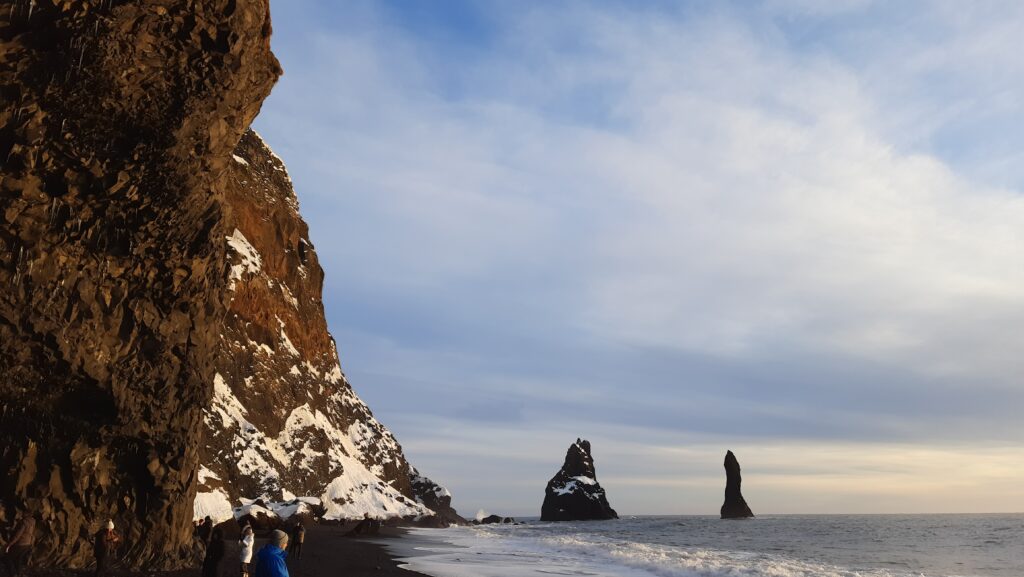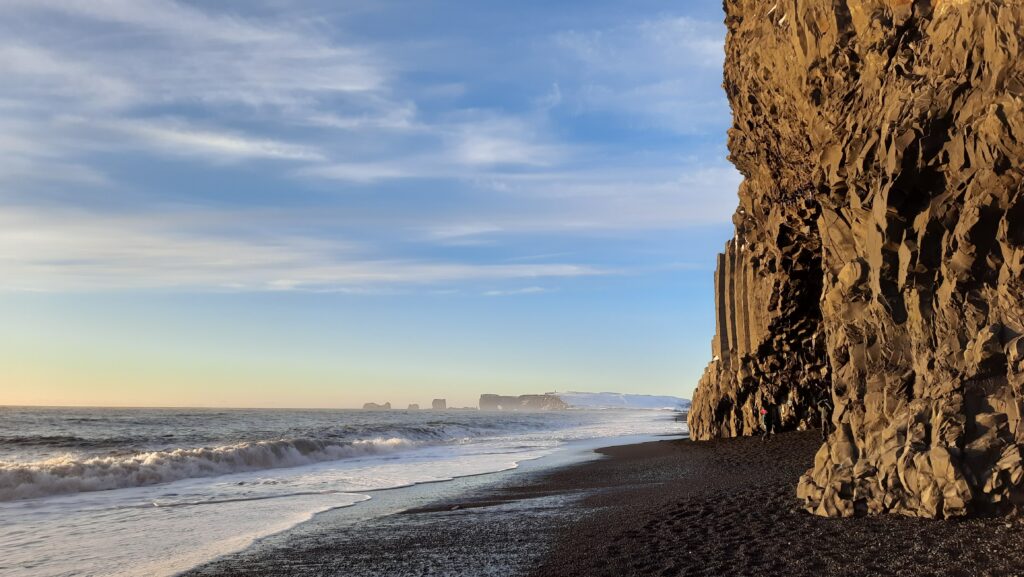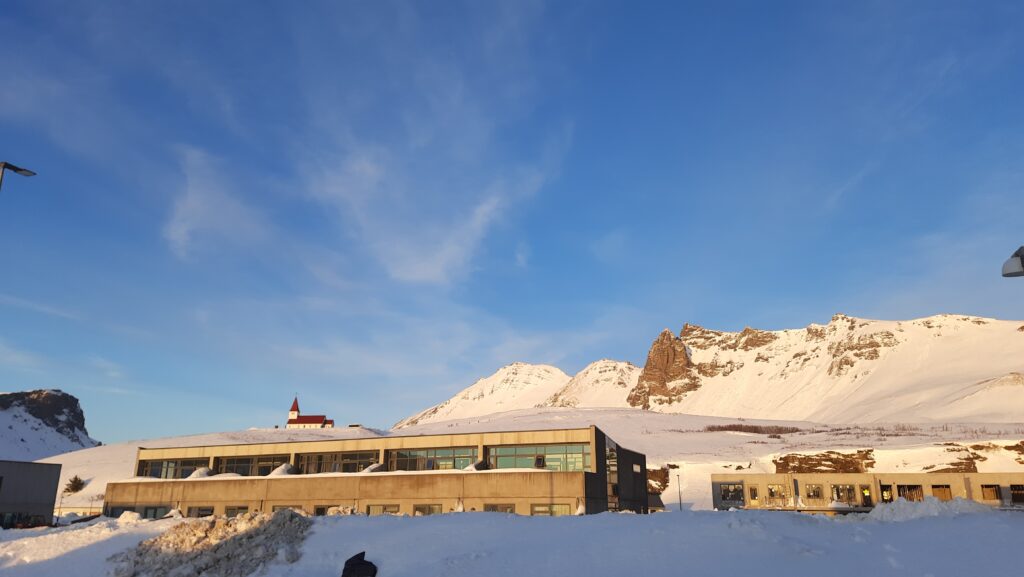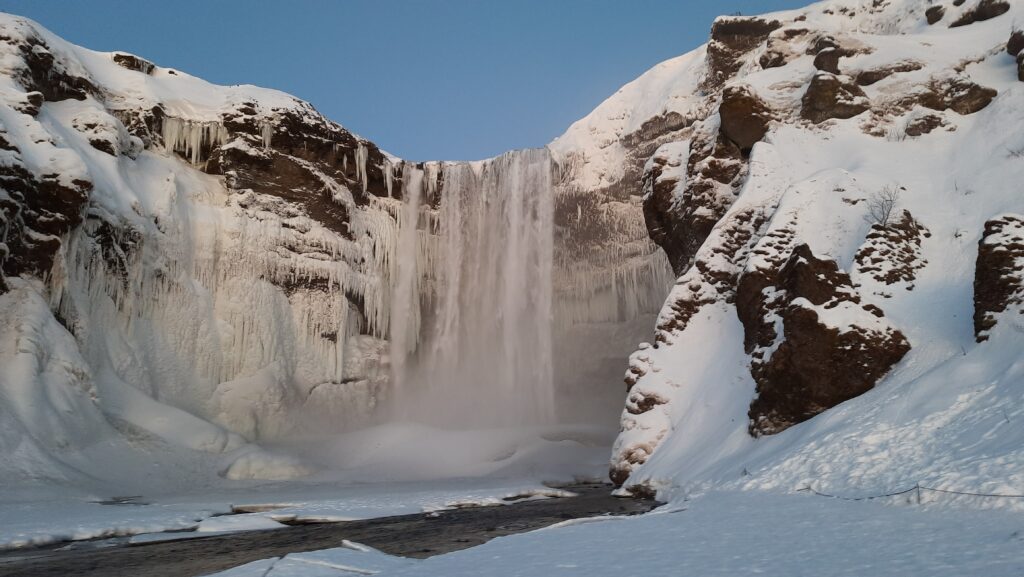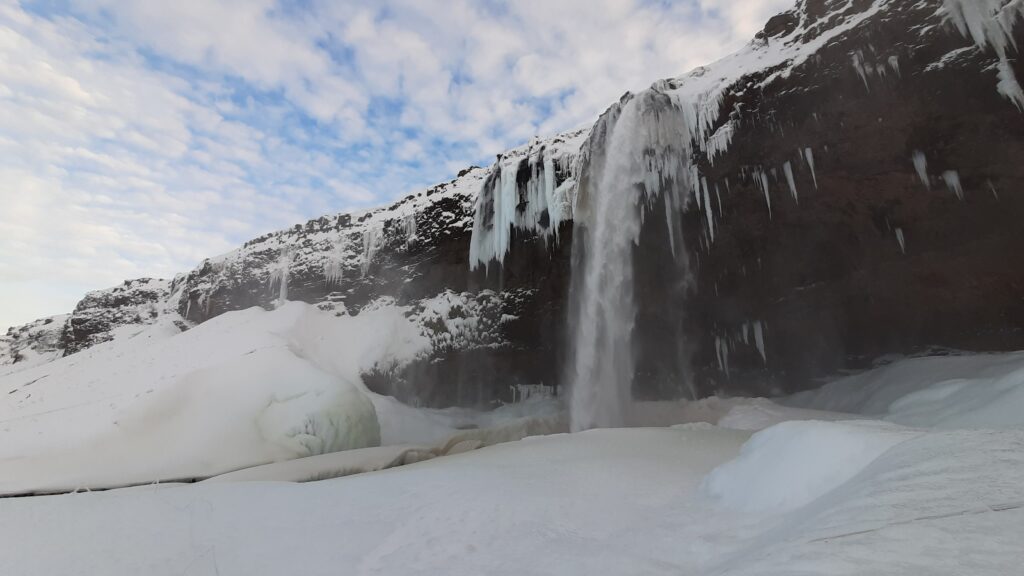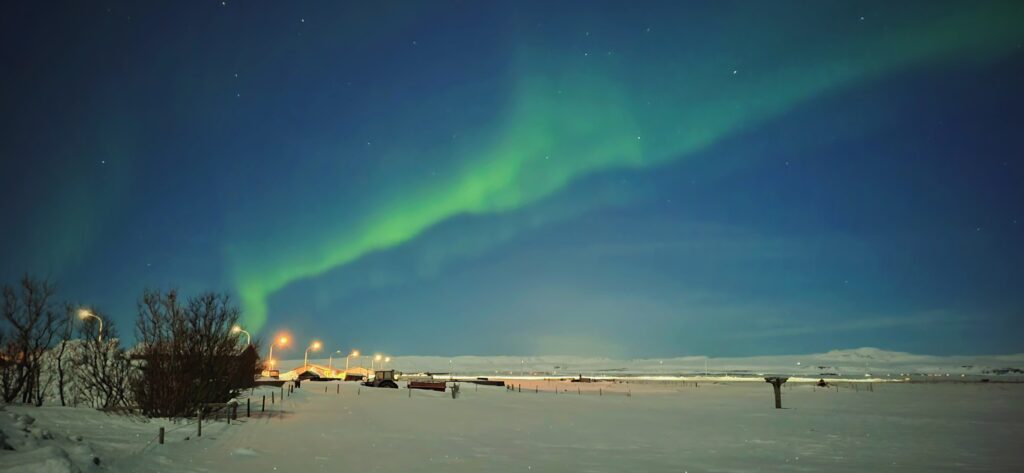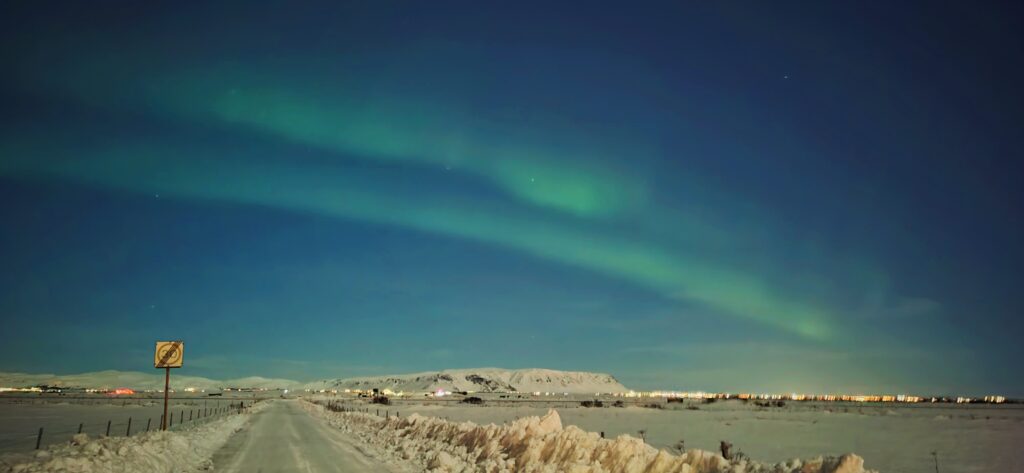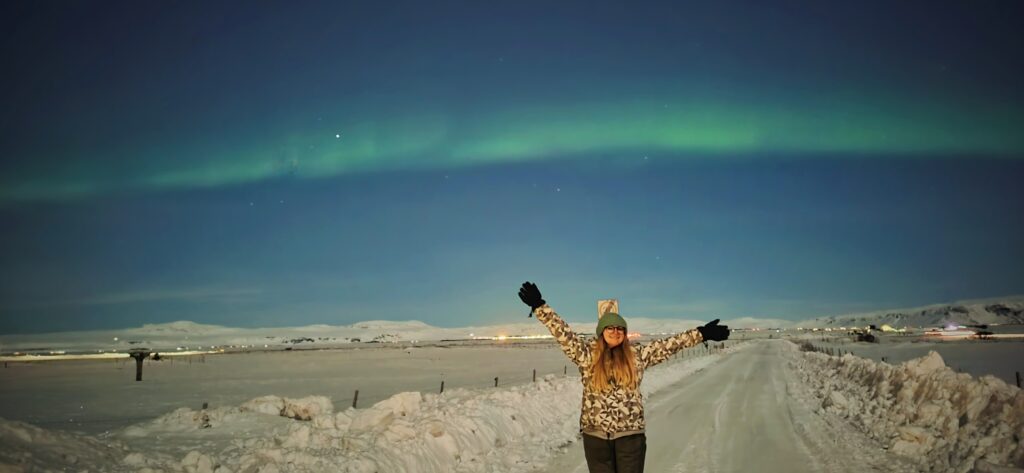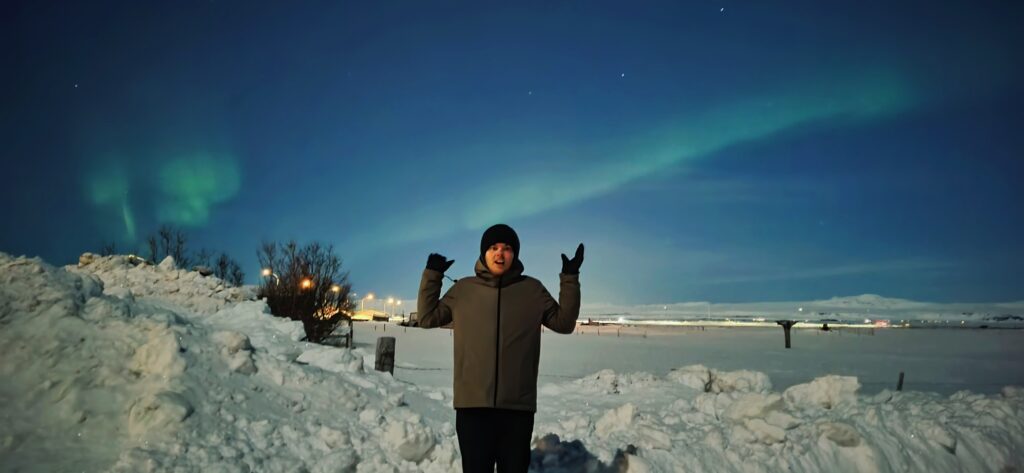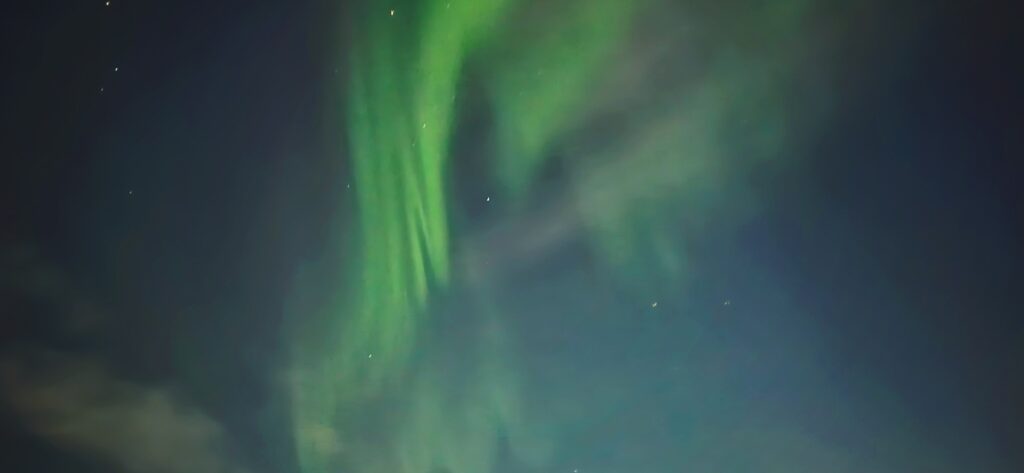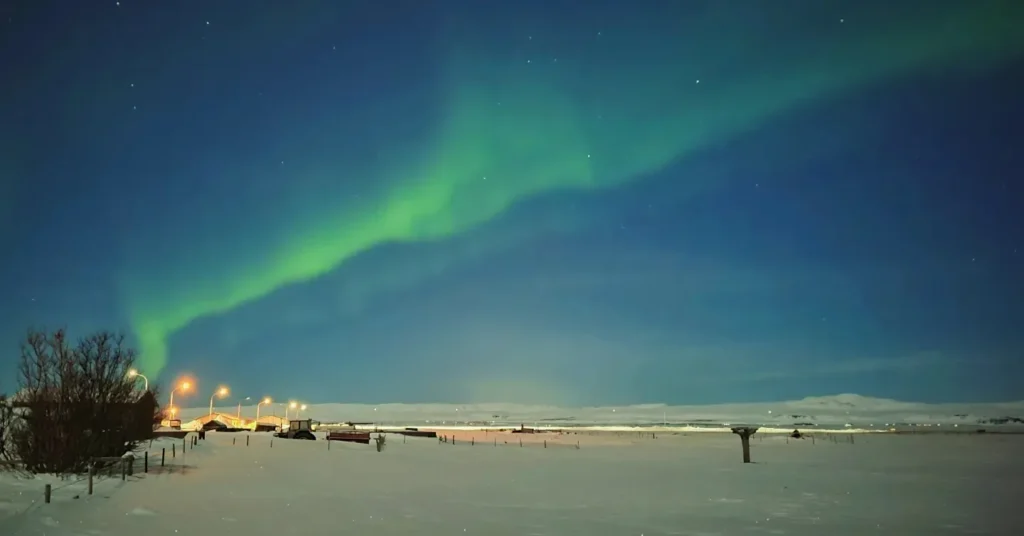
Famously an expensive country, we were prepared for Iceland to be more expensive than our other trips, but it turned out to be such an amazing week where we drove snowmobiles on a glacier, explored ice caves, watched new years’ eve fireworks in Reykjavik, explored the waterfalls and geothermal landscapes and even saw the northern lights. For what we managed to do, we’d say we managed to travel Iceland on a budget!
We did 7 days in Iceland all together, which was a good amount of time to explore the landscape and experience a range of things- especially since we went for New Years celebrations! We hired a car so that we could drive around some of the golden circle and to places off the beaten track, instead of relying on tour buses to dictate where we could stop. Since Iceland does have a very expensive reputation, we also booked accommodation with a kitchen so we could mix between eating out and cooking our own food.
What car should I hire in Iceland?
Hiring a car in Iceland depends on a few factors- time of year, where you plan to go and your budget. As we were going in winter, we hired a 4×4 (which with the unpredictability of the weather is definitely worth it). If you plan to drive on any of the F roads, you will need a 4×4 by law.
This is our car which we called Norman (Normie for short). As you can see from this car park the roads are covered in thick snow so having a 4×4 was actually a lot better for driving here anyway. We were surprised by how old our rental car was and how many miles it had done (100,000+ !). So we spoke to some Icelandic people who said that’s totally normal for cars in Iceland. As they are on such a remote island it’s harder to import new cars, so they just fix the ones they have! That said, make sure your rental car has no issues before you set off- but don’t be alarmed if your car has done quite a lot of miles.
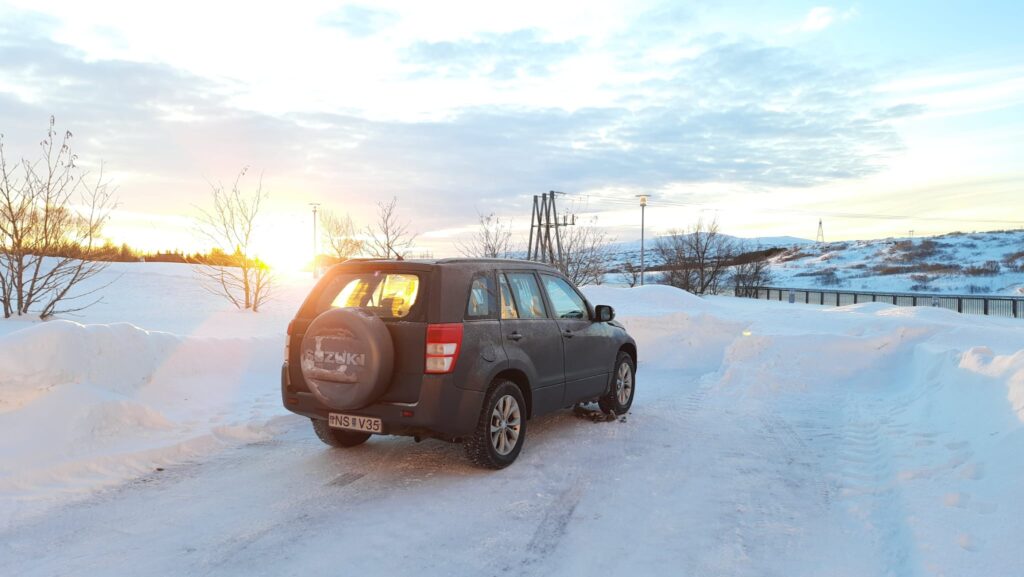
There are loads of car hire companies in Keflavik by the airport, just make sure you read reviews to choose a reliable one. Our car hire company picked us up in a shuttle service from the airport and took us back which was very helpful.
Where should I stay in Iceland?
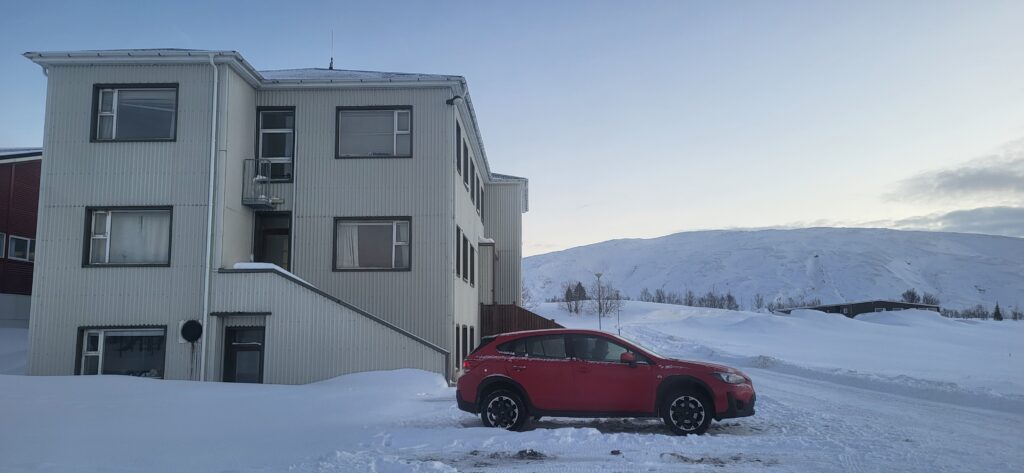
As always, look around different apps and websites to find the best deals (see our cheap hotels page for more tips!) . As we had hired a car, we didn’t mind staying a little further out from the cities to make the cost cheaper. It is worth noting that in winter there are sometimes heavy storms that can lock you inside for days- book somewhere you wouldn’t mind being stuck in for a few days if you had to.
In terms of location, it totally depends on what you want to do when you get to Iceland, and how long you are there for. Obviously further into a city will usually be more expensive, but if you’re not hiring a car this may be your only option. We stayed just off the golden circle for the majority of our trip, so we could complete the golden circle highlights within a few days.
What should I do in Iceland?
Obviously Iceland is well known for it’s natural beauty, it’s such a uniquely stunning country! Highlights for us were exploring the golden circle, new years celebrations in Reykjavik, snowmobiling over a glacier to an ice cave and seeing the northern lights.
Visit Waterfalls
There is estimated to be around 10,000 waterfalls in Iceland, so definitely visit at least a couple on your trip. Gullfoss, Skogafoss and Seljalandsfoss are some of the biggest and are hugely impressive- they also have small cafes and tourist information centres which are especially good when you need a break from the freezing cold in the winter. If you’re after more of an out of the way waterfall, something without these facilities will usually be much more quiet. ‘Foss’ is the Icelandic word for waterfall, so keep an eye out and be open to spontaneous diversions if you see a sign!
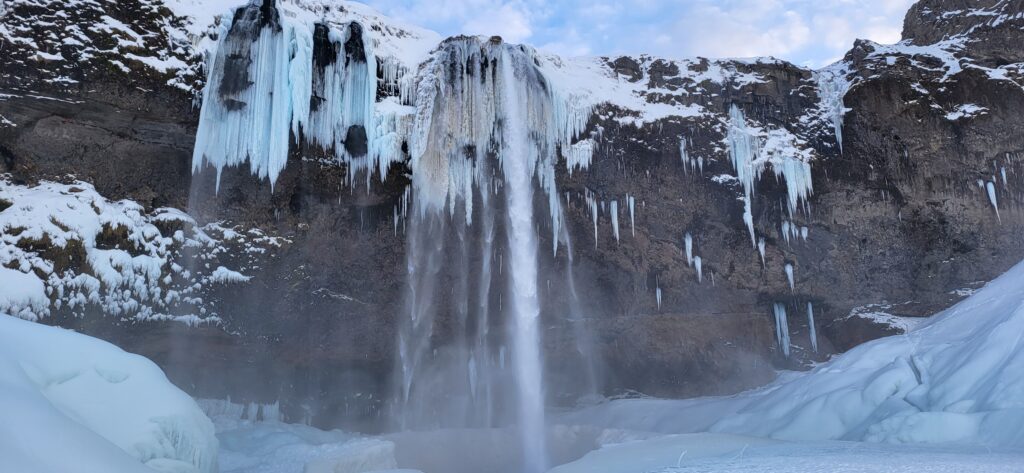
Explore the Geothermal Landscape
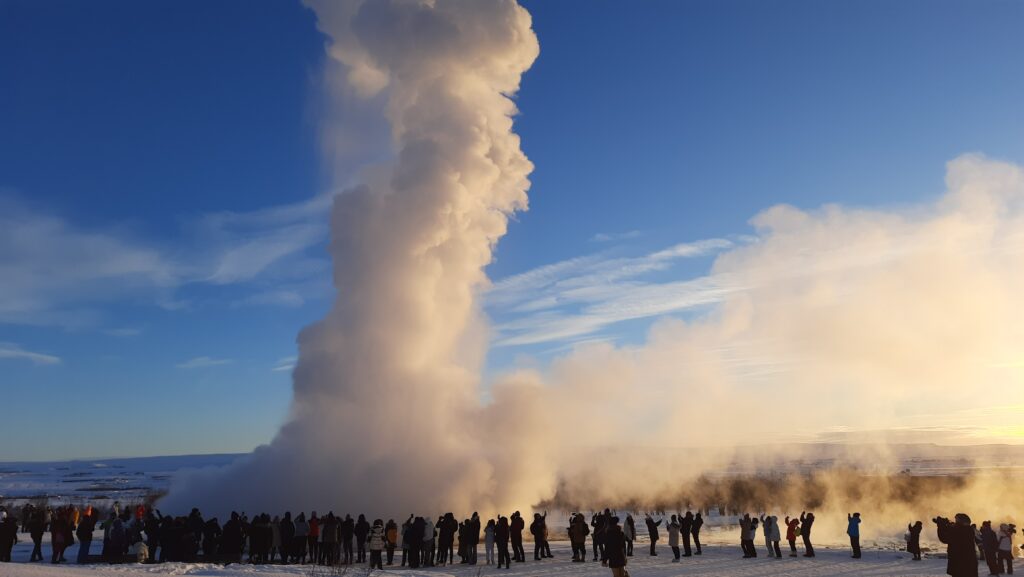
Iceland is hugely geologically active as it sits over a volcanic hot spot- these geothermal landscapes are one of the defining characteristics that make the country so unique, which you should definitely experience on a trip there. Watching water boiling straight from the ground is very strange, and the smell of sulphur is strong !!!!! Swimming in a naturally heated geothermal pool is amazing and geysers are incredible to watch erupting. Iceland is home to both Stokkur and the Great Geysir, two of the most famous worldwide. The geothermal energy in Iceland is used widely across the country, mostly in heating homes.
Look up!
A lot happens in the skies of Iceland. Most obviously, the aurora borealis (the northern lights), but this isn’t the only thing. Icelandic winters are very dark, with only around 4 hours of daylight. This means you get to watch both the sunrise and sunset in the day, and from our experience icelandic skies are stunning. Also, with Iceland being such a small island isolated in the Atlantic Ocean, there is very little light pollution away from the cities. Even the lights from greenhouses glow for miles. This means the astronomical sights are incredible, the stars are so bright and the moon was so clear.
Should I go to the Blue Lagoon?
In short, to get the true traditional Iceland experience, no you shouldn’t. With a minimum entry price of £52 there are so many more authentic geothermal pools in Iceland for a much cheaper price- not to mention the blue lagoon isn’t natural like most others are. Obviously if you’re after an instagrammable light blue coloured lagoon with a mud mask and spa all with the recognisable blue lagoon name, go for it! But for us it just wasn’t what we wanted. Instead, we went to a small local lagoon that charged half the price for entry, provided changing rooms, had a cafe and bar and was much less crowded than the blue lagoon. Plus, we turned up and payed without pre booking so could choose a spontaneous trip, rather than pre booking months in advance for the blue lagoon.
The secret Lagoon had small natural geysirs that exploded right next to the pool every ten minutes or so! We also followed the Icelandic tradition of laying down in the snow and jumping back in to the pool (I say we…Lauren did).
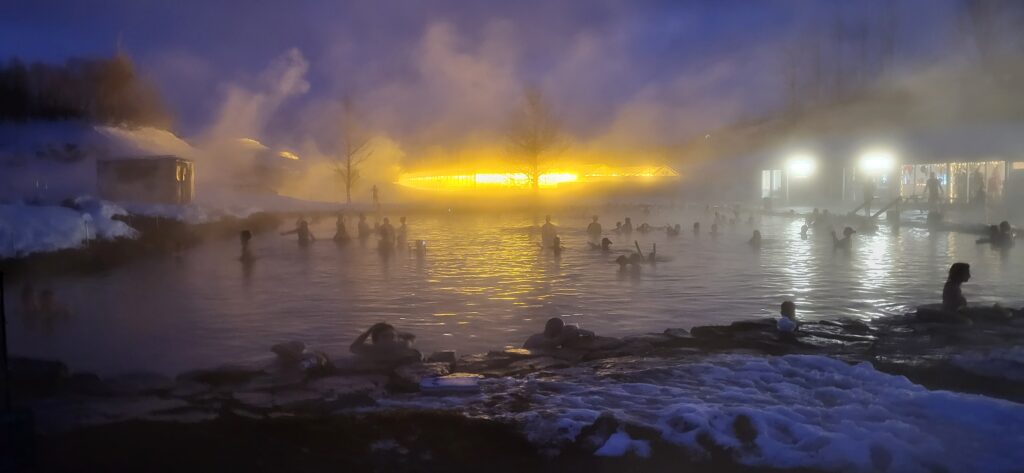
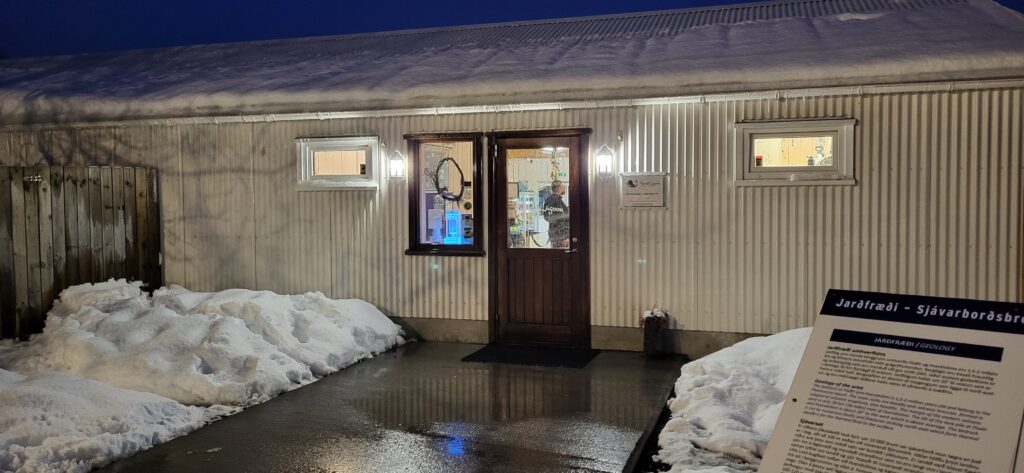
Iceland excursions?
There are so many! The famous one- The Golden Circle- is a highlight route to see a little bit of all the different natural wonders of Iceland; geysers, waterfalls, a crater, the national park- all within an easy drive from Reykjavik. A lot of people don’t actually hire a car in Iceland and rely on day trip excursions and just base themselves in Reykjavik- a great option if you can’t drive/are really adverse to the idea. However, we feel this can be quite limiting on what you get to see. A quick Google search shows a Golden Circle tour at £55 each, for an 8.5 hour day. Whilst that seems a decent length day, the drive between each place can take an hour each if the weather isn’t great, plus that is a round time from Reykjavik- factor in in the winter there’s only 4 hours of daylight in Winter, it doesn’t allow a lot of time to explore. So, why do we think you should do it on your own terms?
Each individual place is stunning! The last thing you’d want is a time limited “there it is, get a photo now move on.” We split the route into 3 days- seeing the Kerid Crater on route from Reykjavik to a hostel. Next day exploring the Pingvellir National park and relaxing in a local Geothermal pool (the Secret Lagoon), and on the third day visiting Geysir, Gullfoss waterfall and taking our snowmobile excursion. Out of that, only the snowmobiling was booked, so everything else could have easily changed depending on the weather or if we wanted to stay longer in one place. So personally, we’d recommend driving the route yourself, and allocate at least 2 days to do so!
Where else can I go with a car? We did a few other things after the Golden Circle. One day we drove down to Vik for a little wander, explored the black sand beach, trekked to the Solheimasandur Plane Wreck, and stopped at Skogafoss on the way back. Whilst Vik was a 2 hour drive from a base near Selfoss, by leaving at 9 in the morning we got there with all 4 hours of daylight, and everything around there was near by!
The Solheimasandur Plane Wreck- you’ll read online some scathing reviews about this. Some points are right, it is quite a small place wreckage and full of people getting those “cool” shots (us included..) but it’s quite a nice easy walk from the car park (about 45 minutes each way) and if you walk further than the plane you get to a nice tranquil black sand beach. There is a shuttle bus from the car park, don’t be fooled by it. It only runs every half hour, is £17 for a return ticket and has a sign at the start of the walk trying to scare you, saying it is a “3 hour hike to the plane.” Absolute rubbish- people had even vandalised the sign saying it’s only 45 minutes each way.
We really enjoyed the plane, so if that interests you definitely take a look! The black sand beach was also stunning and has a lovely café attached which did wonderful cakes (perfect for Adam’s birthday). On the way back, Skogafoss sits just off the main road and is amazing! If you’re a Game of Thrones fan this waterfall is famous from season 8, and if you’re not interested in that just go see it for the fact it is a beautiful waterfall!
Northern Lights?
The incredible natural phenomenon that is on everyone’s bucket list. We tried to spot them a year prior to this trip in Northern Sweden to no avail, so with 7 nights in hand it was certain to happen right…?
The basics of Northern Light hunting are as follows… The aurora borealis are a naturally occurring phenomenon which happens due to the reaction between the magnetosphere and the solar flares- okay enough of the science how the heck do you see them? The higher the ‘KP value’, the better the chance of seeing the lights. Anything above a 4 is considered a good chance ( the scale ranges from 0 to 9), but this value an be very hit or miss. Obviously if there is lots of cloud cover, you probably won’t see them and the darker the better. Even the full moon can be too bright and block the lights- this is why the aurora are mostly spotted from September to March.
Luckily, on our very last night we saw them, and they did not disappoint! It was getting very close to us admitting defeat though, so, are there any tips to see them? Of course, but they’re only as good as the Aurora wants to be! There are lots of ways of tracking the aurora, but obviously they’re a naturally occurring event- so they can be unpredictable! The first app we used was called ‘aurora’, which was okay for tracking cloud coverage and KP index, but we later found ‘hello aurora’ which was definitely better. Hello Aurora let users upload photos from their location of any sightings, and notified you when people had uploaded, and also notified when sub-storms were happening nearby! The user upload was the most useful as it showed real time if the aurora were visible near your location. One night on the trip, the sky was perfectly clear, the KP index was high (6) and tours had flocked to famous viewing places like the national park to catch what was forecasted to be an amazing show, but it never happened. Sometimes they never reach south enough- they’re constantly moving. This did lead to a bit of frustration, and ended up with people uploading photos with drawn squiggly lines onto the apps, which did make us chuckle.
So, is it worth going on a Northern Lights tour? For us, no. We had a car, did our research into the best ways to view them and were ready to go at the chance of any sighting! If however you’re staying in Reykjavik and don’t have a car, it might be worth looking into. Whilst not impossible to see the lights from the city, it is the most well lit place in Iceland so definitely makes it harder. Most of the tours do offer you a second chance trip if you don’t see them on your first one, and are made up of local experts who have been doing these tours most of their lives. They can be quite expensive though, and still offer no guarantee, plus you’ll be outside for hours trying to find them if it’s not an easy first glimpse. For us, we stayed in our hotel (which had a wonderful bay window to look out of) and would get in the car when ready, meaning we stayed warm and prepared to go hunting! The night we did see them, we ended up watching them from the edge of Eyrarbakki on a little road with no lighting and no tourists. Just us and the lights.
Final Costings!
So how much of a budget did we manage to complete this trip on?
Flights- £305 return for the both of us- Gatwick to Keflavik 30th December 15:40, Keflavik to Luton 6th January 18:05- including a small and large cabin bag.
Car- £375 for duration of trip (7 days), plus 2 tanks of petrol (about £160 for both)
Hotels-
- 1 night in Keflavik- £70
- 1 night in Reykjavik (NYE) £89
- 4 nights in the golden circle (20 minutes north of Selfoss)- £183
- 1 night in Eyrarbakki- £58
So £1240 for all the travel side of things (£620 each) which for us is fairly expensive, but for 7 days travelling around Iceland and being there over New Years we found to be very good value for how much we did!
Activity wise- most of the natural wonders are free to visit, you just pay a nominal parking fee (usually about £5). Some places have free parking like Gulfoss and Geyser! Kerid Crater was about £3 to enter. The only large expense we had was our snowmobiling ice cave glacier tour with Mountaineers of Iceland! This was £200 each, but gave you an amazing experience. 2 stints on a snowmobile (perfect to let each other have a go at it!) a tour of a man-made ice cave, and all the equipment you’d need- worth every penny!
Yes, Iceland is one of the more expensive countries- but don’t be scared of visiting on a budget! The natural beauty of the country is unmatched and the people are so friendly. Iceland is also so different in each season, so we definitely plan on visiting again in the spring or summer! Let us know if you have any specific questions, we’ll be happy to help- look on our ‘contact us’ page.
That’s all we have to offer- go and explore Iceland!
Adam & Lauren 🙂
